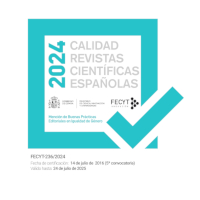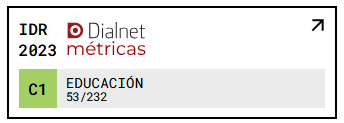El modelo mixto (presencial-virtual) en la enseñanza de la Biología para Ingenieros Técnicos Agrícolas. Un avance sobre las impresiones de los alumnos
DOI:
https://doi.org/10.18172/con.542Keywords:
Biology, teaching, Agricultural Technical Engineering, Mixed Modality, virtual teaching, presential teaching, new technologiesAbstract
We analyzed, by means of a survey, the impressions of the students of Biology on the introduction of the Mixed Modality (presential-virtual) during the course 2002-2003. Biology is a subject belonging to the first course of Agricultural Technical Engineering (Horticulture-Fruticulture and Gardening, and Food and Agriculture Industries) at the University of La Rioja. The participation of the students was relatively low, since only 30% of the registered students answered the survey. The students considered that Biology is a useful subject for their education and they received favorably the introduction of the Mixed Modality. However, they rated lower the virtual part than the presential one. This could be due to: 1) the low availability of computers and scarce knowledge of informatics among the students; 2) the preference of the students to traditional teaching methods; 3) the higher professorial support needed by the students in their first university course, and 4) the possible shortcomings made by the teachers in the first course of Mixed Modality. Some methodological suggestions are outlined for the improvement in the development of the Mixed Modality in the subject of Biology. Our conclusions should be corroborated in the future by means of pluriannual studies.Downloads
References
ALONSO TAPIA, J. (2001). Motivación y estrategias de aprendizaje. Principios para su mejora en alumnos universitarios. En GARCÍA-VALCÁRCEL, A. Didáctica universitaria (79-111). Madrid: La Muralla.
CABERO ALMENARA, J. y DUARTE HUEROS, A. (1999). Evaluación de medios y materiales de enseñanza en soporte multimedia. Pixel-Bit. Revista de Medios y Educación, 13, 23-45.
GET (Grupo de Educación y Telemática) (1998). EVE-A: un entorno virtual de enseñanza-aprendizaje y su aplicación a la formación. En AREA, M. (ed.) Tecnologías de la Información y Educación. ¿Qué enseñamos y qué investigamos en la Universidad española? Actas de las VI Jornadas Universitarias de Tecnología Educativa. Tenerife: Universidad de La Laguna.
GISBERT, M; ADELL, J; ANAYA, L. y RALLO, R. (1997). Entornos de formación Presencial, Virtual y a Distancia. Boletín de RedIris, 40, 13-25.
INSA, D. y MORATA, R. (1998). Multimedia e Internet. Madrid: Paraninfo.
NAVARIDAS NALDA, F. (2001). Analysis of teaching strategies at the University of La Rioja: Proposal for improvement. Ann Arbor, Michigan: ProQuest Information and Learning.
NAVARIDAS NALDA, F. (2002). La actividad didáctica universitaria desde la prerspectiva de los estudiantes: un estudio de caso. En Actas del 2º Congreso Internacional de Docencia Universitaria e Innovación. Tarragona: Publicaciones ICE de la Universidad de Barcelona.
SALINAS IBÁÑEZ, J. (1994). Hipertexto e hipermedia en la enseñanza universitaria. Pixel-Bit. Revista de Medios y Educación, 1, 15-29.
SANCHO, J.M. (EQUIPO ETIC: EDUCACIÓN Y TECNOLOGÍAS DE LA INFORMACIÓN Y LA COMUNICACIÓN) (1998). Balances y propuestas sobre líneas de investigación sobre Tecnología Educativa en España: una agenda provisional. En AREA, M. (ed.), Tecnologías de la Información y Educación. ¿Qué enseñamos y qué investigamos en la Universidad española? Actas de las VI Jornadas Universitarias de Tecnología Educativa. Tenerife: Universidad de La Laguna.
Downloads
Published
How to Cite
Issue
Section
License
The authors retain copyright of articles and authorize Contextos Educativos. Revista de Educación the first publication. They are free to share and redistribute the article without obtaining permission from the publisher as long as they give appropriate credit to the editor and the journal.
Self-archiving is allowed too. In fact, it is recommendable to deposit a PDF version of the paper in academic and/or institutional repositories.












